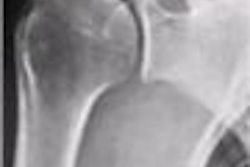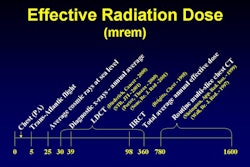At least 40% of patients who undergo coronary artery bypass graft surgery (CABG) develop a pleural effusion in the immediate postoperative period, according to researchers from Saint Thomas Hospital and Vanderbilt University in Nashville. Using x-ray results, this group set out to determine the prevalence of pleural effusions, as well as whether the type of CABG surgery played a role in effusion occurrence.
More than 2,000 CABG procedures are performed yearly at Saint Thomas, wrote Dr. Richard Light and colleagues in the American Journal of Respiratory and Critical Care Medicine. The study population for the retrospective review consisted of 389 patients who had undergone CABG between August 1997 and April 1998.
"Patients who participated in this study had a posteroanterior and lateral chest radiograph when they returned for their regular follow-up visit 3 to 5 weeks postoperatively," the investigators said. "The radiographs as well as the preoperative radiographs were reviewed simultaneously by (co-authors Dr. J. Phillip Moyers and Dr. R. Michael Rodriguez), who arrived at a consensus grade for effusion size..." (AJRCCM, December 15, 2002, Vol.166:12, pp.1567-1571).
Moyers, a radiologist, and Rodriguez, a pulmonologist, used the lateral x-ray images to estimate the size of the effusion by visually estimating the percentage of the area of the hemithorax that was occupied by pleural fluid.
Of the 389 patients, 312 had CABG surgery alone; the prevalence of pleural effusion in these patients was 62.4%. Of these patients, 73.4% had effusions that were unilateral or larger on the left, whereas only 7.2% had effusions that were unilateral on the right or larger on the right.
Thirty-seven patients who underwent CABG and concurrent valve replacement had a 60.5% prevalence of pleural effusion. Finally, 40 patients underwent valve replacement only; the prevalence of pleural effusion in this group was 45%.
"Most of the effusions were small and predominantly left-sided," the group reported, although 40 patients did have effusions that occupied more than 25% of the hemithorax. These were considered large pleural effusions, and were as prevalent in patients who underwent saphenous view graft as in those who had internal mammary artery (IMA) grafts.
The authors also looked at the factors associated with pleural effusion development. They found no significant relationship between effusion occurrence and patient age, sex, cardioplegia (antegrade or retrograde), operative time, or number of grafts. Patients who underwent IMA grafts, or were given topical hypothermia with iced slush, may have been at a higher risk for pleural effusions.
The authors concluded that the present rate of pleural effusions 28 days after CABG could be pegged at 10%, making it the fifth leading cause for pleural effusions. However, "most CABG effusions are small, are left-sided, and regress spontaneously," they wrote.
With regard to imaging, the study did have one notable limitation: In order for the patients in this study to undergo postoperative x-ray, the cardiac surgeons had to remember to request the exam, which could have resulted in a selection bias, the authors noted. Also, other modalities such as ultrasound have shown a higher detection rate (Chest, June 1994, Vol.105:6, pp. 1748-1752).
It is not routine for patients to undergo post-CABG imaging at his institution, unless the patient is symptomatic, Light told AuntMinnie.com. Light is the director of the pulmonary disease program at Saint Thomas Hospital.
By Shalmali PalAuntMinnie.com staff writer
January 8, 2003
Related Reading
CT spots sentinel pneumonia in 9-11 rescue worker, September 25, 2002
SonoSite launches iLook in U.S., August 19, 2002
Copyright © 2003 AuntMinnie.com



















